– PhotonicsMedia: Spectra February 2023
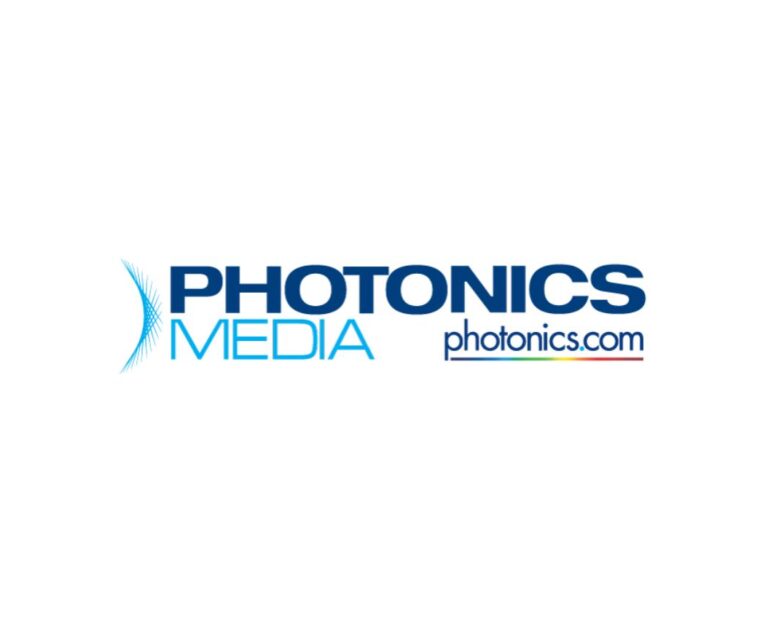

– PhotonicsMedia: Spectra February 2023
– PhotonicsMedia: Spectra February 2023
Tags: EFFECT Photonics, FSO, Photonics Spectra, PhotonicsMedia
Earlier this week, Boudewijn Docter, announced that he was stepping down as President and Director…
Earlier this week, Boudewijn Docter, announced that he was stepping down as President and Director of EFFECT Photonics at the end of January.
Boudewijn co-founded EFFECT Photonics with Tim Koene 13 years ago and since then has been building a company that started out of a lab at the TU/e and has grown into an internationally respected player in the field of photonic integrated technology.
I’m immensely proud of what we have achieved so far. Although the adventure is far from over, I feel that the team is ready to guide the company through the next cycle of growth. For me, this is a natural time to hand over my daily activities in the management team to my colleague Roberto Marcoccia and his team.
Boudewijn
Today it was announced that Boudewijn would be joining HighTechXL, a venture building/start-up accelerator focused on deep-tech technology as their Chief Growth Officer. As Chief Growth Officer, Boudewijn will work to inspire, support, and coach newly created HTXL ventures, helping them become investor-ready by the end of their nine-month venture-building program. While this will be Boudewijn’s main focus, he will still be available in an advisory capacity and also continue to represent EFFECT Photonics in the Dutch photonics ecosystem.
On behalf of everyone at EFFECT Photonics, we want to thank Boudewijn for everything that he has done and meant for the company. We wish him every success in this next chapter and in his new role, and we look forward to continuing the EFFECT Photonics journey with him but then in a slightly different way.

# # #
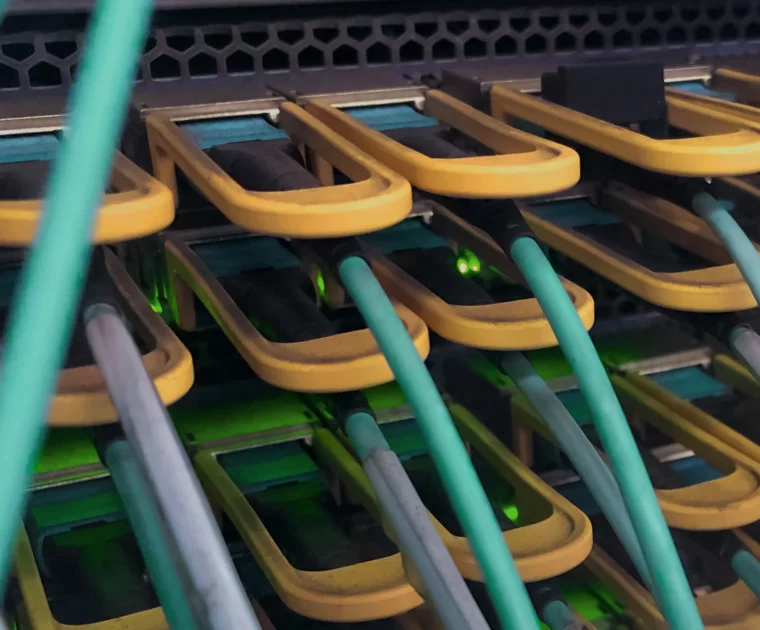
In June 2022, transceiver developer II‐VI Incorporated (now Coherent Corp.) and optical networking solutions provider…
In June 2022, transceiver developer II‐VI Incorporated (now Coherent Corp.) and optical networking solutions provider ADVA announced the launch of the industry’s first 100ZR pluggable coherent transceiver. Discussions in the telecom sector about a future beyond 400G coherent technology have usually focused on 800G products, but there is increasing excitement about “downscaling” to 100G coherent products for certain applications in the network edge and business services. This article will discuss the market and technology forces that drive this change in discourse.
The 400ZR pluggables that have become mainstream in datacom applications are too expensive and power-hungry for the optical network edge. Therefore, operators are strongly interested in 100G pluggables that can house coherent optics in compact form factors, just like 400ZR pluggables do. The industry is labeling these pluggables as 100ZR.
A recently released Heavy Reading survey revealed that over 75% of operators surveyed believe that 100G coherent pluggable optics will be used extensively in their edge and access evolution strategy. However, this interest had not really materialized into a 100ZR market because no affordable or power-efficient products were available. The most the industry could offer was 400ZR pluggables that were “powered-down” for 100G capacity.
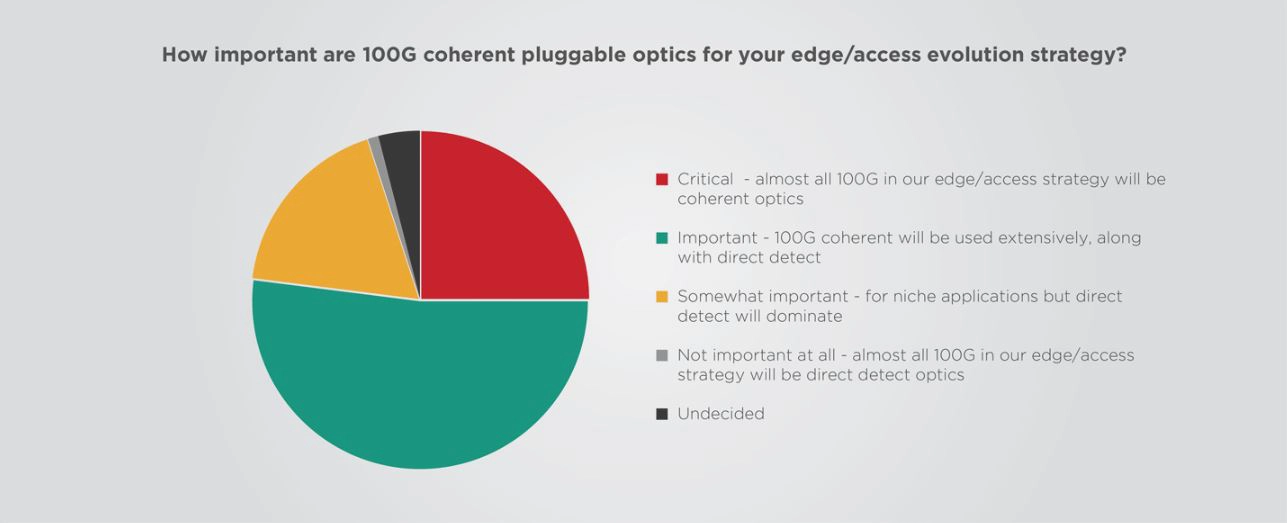
With the recent II-VI Incorporated and ADVA announcement, the industry is showing its first attempts at a native 100ZR solution that can provide a true alternative to the powered-down 400ZR products. Some of the key specifications of this novel 100ZR solution include:
The 5 Watt-power requirement is a major reduction compared to the 15-Watt specification of 400ZR transceivers in the QSFP-DD form factor. Achieving this spec requires a digital signal processor (DSP) that is specifically optimized for the 100G transceiver.
Transceiver developers often source their DSP, laser, and optical engine from different suppliers, so all these chips are designed separately from each other. This setup reduces the time to market, simplifies the research and design processes, but comes with performance and power consumption trade-offs.
In such cases, the DSP is like a Swiss army knife: a jack of all trades designed for different kinds of optical engines but a master of none. DSPs co-designed and optimized for their specific optical engine and laser can significantly improve power efficiency. You can read more about co-design approaches in one of our previous articles.
Making 100ZR coherent optical transceivers more affordable is also a matter of volume production. As discussed in a previous article, if PIC production volumes can increase from a few thousand chips per year to a few million, the price per optical chip can decrease from thousands of Euros to mere tens of Euros. Such manufacturing scale demands a higher upfront investment, but the result is a more accessible product that more customers can purchase.
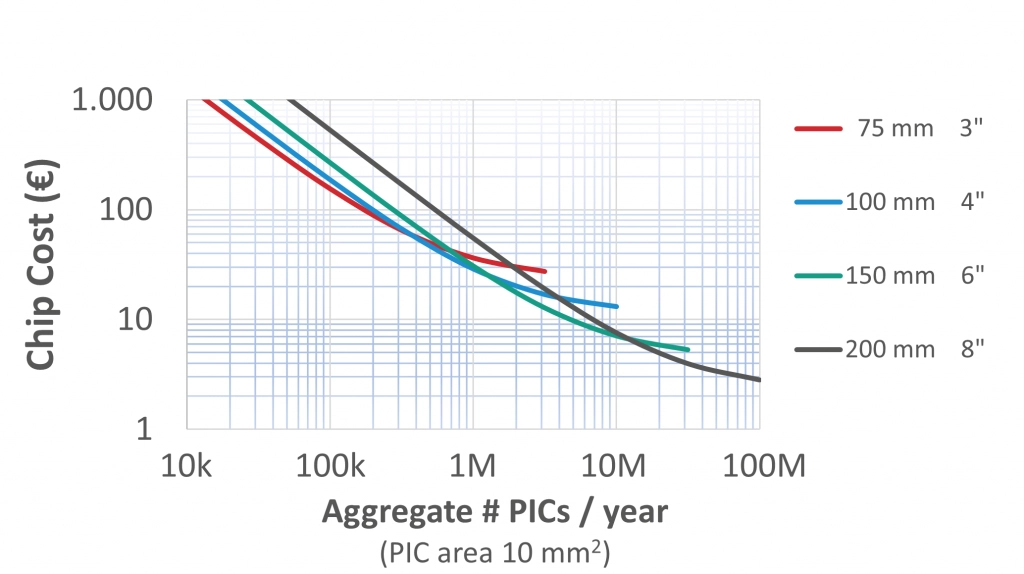
Achieving this production goal requires photonics manufacturing chains to learn from electronics and leverage existing electronics manufacturing processes and ecosystems. Furthermore, transceiver developers must look for trusted large-scale manufacturing partners to guarantee a secure and high-volume supply of chips and packages.
If you want to know more about how photonics developers can leverage electronic ecosystems and methods, we recommend you read our in-depth piece on the subject.
As the Heavy Reading survey showed, the interest in 100G coherent pluggable optics for edge/access applications is strong, and operators have identified use key use cases within their networks. In the past, there were no true 100ZR solutions that could address this interest, but the use of optimized DSPs and light sources, as well as high-volume manufacturing capabilities, can finally deliver a viable and affordable 100ZR product.
Tags: 100G coherent, 100ZR, DSP, DSPs, edge and access applications, EFFECT Photonics, Photonics
EFFECT Photonics, a leading developer of highly integrated optical solutions, announced today that it has…
EFFECT Photonics, a leading developer of highly integrated optical solutions, announced today that it has selected Fabrinet (NYSE: FN) as its manufacturing partner for its integrated optical sub-assemblies.
Fabrinet is a global leader in high-precision optical, electronic and mechanical manufacturing services, and a proven partner for original equipment manufacturers (OEMs) worldwide. As a manufacturing partner, Fabrinet will perform sourcing, procurement, assembly, test, and calibration of EFFECT Photonics’ integrated optical sub-assemblies.
Increased optical bandwidth is needed more than ever before due to a wide range of cloud and cloud edge applications and the increased access speeds enabled by 5G and beyond. Photonics are ideally suited to serve this need, but production currently plays an important role in bringing integrated optics technology to the masses. By leveraging Fabrinet’s leadership in electro-optical and electronics manufacturing, EFFECT Photonics can adapt and scale its integrated optical solutions to meet ever-changing market demands and high-volume requirements.
Fabrinet is recognized worldwide for its best-in-class expertise in the field of optical product manufacturing and its ability to support the most demanding markets, technologies, and business models. By leveraging their proven capabilities and longstanding manufacturing prowess, EFFECT Photonics is able to offer our customers increased supply, reliability, efficiency and cost-effectiveness.
Roberto Marcoccia, CEO, EFFECT Photonics.
We are pleased to have been selected by EFFECT Photonics as their manufacturing partner to provide production at scale for their optical subassemblies. As a leader in advanced optical packaging and precision manufacturing for complex devices, we are well positioned to support EFFECT Photonics in achieving their business goals.
Edward Archer, Executive Vice President Sales & Marketing at Fabrinet.
Where Light Meets Digital – EFFECT Photonics is a highly vertically integrated, independent optical systems company addressing the need for high-performance, affordable optic solutions driven by the ever-increasing demand for bandwidth and faster data transfer capabilities.
Using our proprietary digital signal processing and forward error correction technology and ultra-pure light sources, we offer compact form factors with seamless integration, cost efficiency, low power, and security of supply. By leveraging established microelectronics ecosystems, we aim to make our products affordable and available in high volumes to address the challenges in 5G and beyond, access-ready coherent solutions, and cloud and cloud edge services. For more information, please visit: www.effectphotonics.com. Follow EFFECT Photonics on LinkedIn and Twitter.
Fabrinet is a leading provider of advanced optical packaging and precision optical, electro-mechanical, and electronic manufacturing services to original equipment manufacturers of complex products, such as optical communication components, modules and subsystems, automotive components, medical devices, industrial lasers and sensors. Fabrinet offers a broad range of advanced optical and electro-mechanical capabilities across the entire manufacturing process, including process design and engineering, supply chain management, manufacturing, advanced packaging, integration, final assembly and testing. Fabrinet focuses on production of high complexity products in any mix and any volume. Fabrinet maintains engineering and manufacturing resources and facilities in Thailand, the United States of America, the People’s Republic of China, Israel and the United Kingdom. For more information, please visit www.fabrinet.com.
# # #
Media Contact:
Colleen Cronin
EFFECT Photonics
colleencronin@effectphotonics.com

EFFECT Photonics announced today the appointment of Roberto Marcoccia as Interim Chief Executive Officer, effective…
EFFECT Photonics announced today the appointment of Roberto Marcoccia as Interim Chief Executive Officer, effective immediately.
Roberto currently serves as the company’s Chief Development and Strategy Officer, and he will also retain that role. This appointment follows James Regan’s decision to step down as CEO.
I am truly proud of where EFFECT Photonics stands today and how much we’ve grown since I first met Boudewijn Docter and Tim Koene, and worked with them to build a company out of exciting technology. The past decade has been hugely rewarding, and I have made many friends here, which makes the decision to leave very difficult. I feel, however, that the company now stands at the beginning of an important new phase in its development and that it is time for a fresh pair of hands to carry it forward on its journey.
James Regan, CEO EFFECT Photonics
We are forever grateful to James for his dedication and contributions to EFFECT Photonics throughout the years. His leadership helped us grow from a small start-up to a global company with over 250 employees. While we are saddened to see James leave, we are excited for the next chapter and look forward to our promising road ahead.
Steve Turley, Chairman of the Board
Roberto has extensive experience in the optical telecommunications industry having held leadership positions at Juniper Networks, Stratalight Communications, Calient Networks and more. He has previously served in an interim CEO role and has a proven track record of delivering innovative products to market while leading multi-disciplinary functional and engineering teams.
I am honored to take on the interim CEO role at a pivotal time for EFFECT Photonics as we enter our next phase of growth. I look forward to building on the company’s vision and success, and to working with the team to democratize integrated optics technology for telecommunications and beyond.
Roberto Marcoccia – Chief Development and Strategy Officer
EFFECT Photonics is a highly vertically integrated, independent leader in integrated optics, addressing the need for high-performance, affordable solutions driven by the ever-increasing demand for bandwidth and faster data transfer capabilities. EFFECT Photonics is headquartered in Eindhoven, The Netherlands, with additional facilities in the UK, the US and Taiwan, and a worldwide network of sales partners. www.effectphotonics.com
# # #
Primary Media Contact:
Colleen Cronin
Senior Media Relations Manager
colleencronin@effectphotonics.com
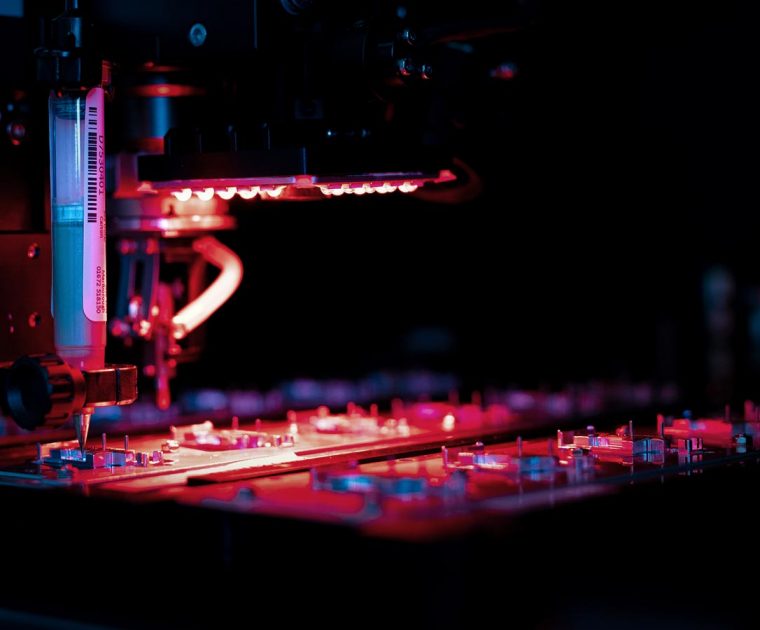
EFFECT Photonics is delighted to announce that it is on the list of 50 most…
EFFECT Photonics is delighted to announce that it is on the list of 50 most promising European Deep Tech start-ups as part of the EIC ScalingUp programme. A Selection Committee of experienced investors chose to include EFFECT Photonics from more than 3,000 candidates in a selection process covering several stages. These companies are considered the most promising EIC (European Innovation Council) deep tech companies that have the potential to achieve substantial growth, and to become world-scale companies or to realise a big exit or IPO.
“Through the EIC ScalingUp project the EIC supports high-growth, high potential companies with visionary ideas, disruptive technologies, and the ambition to grow exponentially in Europe and globally.”– Jean-David Malo, Director, European Innovation Council (EIC) and SMEs Executive Agency (EISMEA).
“We are honoured to be part of this select group. Our thanks go to the European Innovation Council, Tech Tour, DeepWave Ventures, Boston Consulting Group and bpifrance for the opportunity to further expand on our ambitions to make complex, powerful optical systems simpler and more accessible.”– James Regan, CEO EFFEFCT Photonics.
To learn more about the EIC ScalingUp programme, please click here.
To download the Top50 Publication, please click here.
About EFFECT Photonics
EFFECT Photonics delivers highly integrated optical communications products based on its Dense Wavelength Division Multiplexing (DWDM) optical System-on-Chip technology. The key enabling technology for DWDM systems is full monolithic integration of all photonic components within a single chip and being able to produce these in volume with high yield at low cost. With this capability, EFFECT Photonics is addressing the need for low cost DWDM solutions driven by the soaring demand for high bandwidth connections. EFFECT Photonics is headquartered in Eindhoven, The Netherlands, with additional R&D and manufacturing in South West UK, a subsidiary in Taiwan, a facility opening shortly outside Boston, and a worldwide network of sales partners.


EFFECT Photonics is pleased to share that it has been chosen as one of the…
EFFECT Photonics is pleased to share that it has been chosen as one of the 2021 Deep Tech Programme winners.
EFFECT Photonics was one of the 46 selected companies, from a pool of over 300 candidates, presenting their business at the TechTour Deep Tech Programme 2021 (https://techtour.com) on 17-18 November 2021. The main goal was to unite the top deep tech companies in seeking funding with 200+ corporate and VC investors during a focused 2-day online event.

About EFFECT Photonics
For further information please contact sales@effectphotonics.com
EFFECT Photonics delivers highly integrated optical communications products based on its Dense Wavelength Division Multiplexing (DWDM) optical System-on-Chip technology. The key enabling technology for DWDM systems is full monolithic integration of all photonic components within a single chip and being able to produce these in volume with high yield at low cost. With this capability, EFFECT Photonics is addressing the need for low cost DWDM solutions driven by the soaring demand for high bandwidth connections between datacentres and back from mobile cell towers. EFFECT Photonics is headquartered in Eindhoven, The Netherlands, with additional R&D and manufacturing in South West UK, a facility opening soon in the Greater Boston Area and sales partners worldwide. www.effectphotonics.com
Tags: Deep Tech, EFFECT Photonics, Photonics, transceiversSFP
EFFECT Photonics, a leading developer of high-performance dense wavelength division multiplexing (DWDM) optical components based…
EFFECT Photonics, a leading developer of high-performance dense wavelength division multiplexing (DWDM) optical components based on its optical System-on-Chip technology, is pleased to announce that it has been selected as top of the top at Tech Tour 2020 Programmes and is one of the top winners at Tech Tour Future21. Tech Tour is one of largest investor-oriented communities in Europe connecting entrepreneurs, investors, and corporate partners from across the world.
– About EFFECT Photonics –
EFFECT Photonics delivers highly integrated optical communications products based on its Dense Wavelength Division Multiplexing (DWDM) optical System-on-Chip technology. The key enabling technology for DWDM systems is full monolithic integration of all photonic components within a single chip and being able to produce these in volume with high yield at low cost. With this capability, EFFECT Photonics is addressing the need for low cost DWDM solutions driven by the soaring demand for high bandwidth connections between datacenters and back from mobile cell towers. Headquartered in Eindhoven, The Netherlands, with additional R&D and manufacturing in South West UK, with sales partners worldwide. www.effectphotonics.com
For more on our technology, visit: https://effectphotonics.com/stagingenvironment123/technology/
Get in touch with us for further information by sending your request to: sales@effectphotonics.com
– About tech Tour –
Tech Tour Tech Tour is committed to the development of emerging technology companies in Europe and has been doing it for 20 years. The Tech Tour Community is made up of innovative investors, high tech entrepreneurs (from early to late-stage), corporate and government influencers that want to drive European innovation further. https://techtour.com/


Today EFFECT Photonics announces the first close of its Series C round, co-led by Smile…
Today EFFECT Photonics announces the first close of its Series C round, co-led by Smile Invest together with existing investor Innovation Industries Fund, exactly one year after announcing the tape-out of its Manta full photonic integration coherent PIC. Smile Invest are joined by existing investors including Innovation Industries Fund, Photon Delta, btov Partners, Brabant Development Agency (BOM) and individual investors.
EFFECT Photonics is a world leading developer of optical transceivers, bringing core network performance to the network edge, through integration of all the optical functions on to a single Photonic Integrated Circuit combined with low cost, non-hermetic packaging.
James Regan, CEO stated: “With our disruptive technology, we have already enabled DWDM in high-capacity 5G Radio Access Networks through our low-cost autotuning SFP+ modules, which are deployed around the world. This funding and our partnership with our investors will allow us to take the next leap forward, bringing even higher capacity “coherent” products to the network edges, as well as scaling existing production.”
Tim Koene, CTO explained: “Conventional coherent approaches require external narrow-linewidth tunable lasers and amplification, wasting light and adding cost, space and power consumption. Already demonstrated to key customers, the non-hermetic Manta prototypes integrate all of these functions on a single chip, bringing a revolution in low electrical power consumption together with high optical output power: high transmission performance in a small formfactor that will enable the next generation of edge network capacity.”
Bart Cauberghe, Managing Partner at Smile Invest commented: “We see in EFFECT Photonics a company with unique technology, with a team that has shown that they can also convert this into innovative products for a fast-growing market. In that respect, the company fits perfectly in the activities of Smile Invest, given our focus on innovative, ambitious companies that have the potential to become the market leader in their segment. We are delighted to be joining with the strong group of existing investors”.
Nard Sintenie, General Partner at existing investor Innovation Industries added: “What EFFECT Photonics has developed is a real platform technology, with which new products can rapidly be launched. We are pleased to continue to support the company and see great potential for the future”.
— End of Press Release–
About EFFECT Photonics
EFFECT Photonics delivers highly integrated optical communications products based on its Dense Wavelength Division Multiplexing (DWDM) optical System-on-Chip technology. The key enabling technology for DWDM systems is full monolithic integration of all photonic components within a single chip and being able to produce these in volume with high yield at low cost. With this capability, EFFECT Photonics is addressing the need for low cost DWDM solutions driven by the soaring demand for high bandwidth connections between datacentres and back from mobile cell towers. Headquartered in Eindhoven, The Netherlands, with additional R&D and manufacturing in South West UK, with sales partners worldwide. www.effectphotonics.com
Contact us: • press@effectphotonic.com • +31 403041359
About Smile Invest
Smile Invest (Smart Money for Innovation Leaders) is a European evergreen investment firm with €350 million assets under management, financed by 40 entrepreneurial families and with a long term focus on innovative growth companies. Smile Invest focuses on companies active in technology, healthcare and innovative consumer markets. From its offices in Leuven and The Hague the team supports ambitious entrepreneurs and management teams in realising their growth plans. www.smile-invest.com
Contact Smile Invest: Bart Cauberghe, Managing Partner • bart.cauberghe@smile-invest.com • +32 476 33 66 69
Tags: EFFECT Photonics, Funding, Hightech, IntergratedPhotonics, Investment, Optical Chips, PIC
Surfing the internet is only possible thanks to data centres. Since the coronavirus pandemic, internet…
Surfing the internet is only possible thanks to data centres. Since the coronavirus pandemic, internet use has skyrocketed. In some countries a staggering download rate of 2.6 terabytes per second was reported after lockdowns were imposed. Researchers and companies are now looking for techniques to make data centres more energy-efficient.
All our online behaviour relies on those data centres, which can be described as large warehouses full of servers on which all kinds of online applications run. The physical layer of the internet consumes an enormous amount of energy. Exactly how much is not entirely clear, but it is expected that by 2030 it could take up as much as 20 per cent of our electricity consumption. The companies operating these facilities are racing against time to make their locations energy-efficient. With this aim, Microsoft recently tested an undersea data centre off the coast of the Scottish Orkney Islands.

Keep it cool
By far the largest data centre in Belgium can be found in Wallonia. At Saint-Ghislain in Hainaut, Google owns a complex that extends over 100 hectares. “We run almost all our applications from here,” says Site Operations Manager Frederic Descamps, “from Google Streetview and Maps to YouTube and of course the search engine itself.”
Much of the energy consumed by this Google data centre goes into cooling the servers. “We are lucky with the mild climate here,” said Descamps. “We can cool the servers using evaporation of water. This is done by letting water run past the servers. The water absorbs their heat and goes to a cooling tower, where it is sprayed into the air. The cooled water flows down the tower, so it can pass the servers again.”
This method turns out to be more efficient than the air cooling that data centres usually employ, which is comparable to an air conditioning system. Efficiency is measured using the so-called PUE ratio, short for power usage effectiveness. This is the ratio between the total energy consumption of a data centre and the energy needed to power the servers. “That ratio must be kept as low as possible,” says Descamps. “You want to use as little energy as possible on top of what is specifically needed for the servers.” In Saint-Ghislain, Google achieves an annual PUE average of 1.08, according to Descamps. That is pretty good efficiency: market research firm Uptime Institute found the average PUE worldwide in 2020 was 1.58.

Bigger is better
The oversized facility in Saint-Ghislain is one of the so-called hyperscale data centres. “These server complexes use more than 50 megawatts of power,” says Marc Decorte of data centre builder Kevlinx, “whilst most data centres in Belgium offer less than 10 megawatts of capacity.”
In Brussels, Kevlinx is working on the development of a new hyperscale location on behalf of the British telecoms company COLT. This future data centre in Brussels will consume up to 68 megawatts – equivalent to the consumption of tens of thousands of households.
And yet, such hyperscale centres are often positive evolutions. Large data centres replace smaller versions or server rooms at the companies themselves. These larger locations are often more efficient, and invest more in cooling technology and newer servers. Kevlinx is now aiming for a PUE of less than 1.2 for this site. In addition, it is investigating how residual heat can be used for heating the surrounding offices, to reduce consumption of fossil fuels even further.
Training AI to save energy
Being energy-efficient is not only about cooling: it is also about the efficiency of the servers themselves and the applications that run on them. For a number of years, many of their functions have been based on artificial intelligence. Applications using AI, like YouTube and Google Translate, require a lot of calculations from computers and therefore consume tonnes of energy.
Usually, an AI system is trained by serving it large amounts of data. It then autonomously discovers patterns and learns to take actions based on them. “An AI system in a self-driving car, for example, gets a lot of video images on which pedestrians are already indicated,” says AI expert Mieke De Ketelaere of imec. “The system learns to recognise them on new images and to avoid them once the car is on the road.”
A new training method eliminates certain calculations if they are not important. This process, called network pruning, saves energy, but how much depends on the AI model and the hardware used during the training process.
Photonics as an energy saver
If investments continue to be made, consumption could remain flat until 2022. However, there are other areas where data centres can save energy. The Dutch company EFFECT Photonics makes another link more efficient: the connection between the data centre and the internet. Data is sent back and forth via fibre-optic cables – ‘travelling’ in the form of optical signals. But data centres themselves only work via electrical signals.
“We design the parts that convert electrical data into optical pulses,” explains Boudewijn Docter, President of EFFECT Photonics. The company enables systems to work more energy-efficiently than before. “With previous systems you had a lot of separate parts, but we now place everything on one chip. This way the transition performs better.”
It means you can get the same amount of bits per second through the fibre-optic cable, but with the advantage of a highly reduced energy consumption. Reducing emissions is after all a major concern. Recent predictions state that the energy consumption of data centres is set to account for 3.2 percent of the total worldwide carbon emissions by 2025 and they could consume no less than a fifth of global electricity. By 2040, storing digital data is set to create 14 percent of the world’s emissions, around the same proportion as the US does today (source: Computerworld). It is here where EFFECT Photonics sees making a significant contribution. Their System on Chip technology provide the desired high-speed, but also the necessary energy efficiency. Their photonic integrated circuits for transceivers enable these mega-datacentres to reduce their impact on society. In this increasingly data-driven economy, datacentres remain one of the most important pieces of our business infrastructure, so they will have to adopt this technology.

Servers go under… water?
Meanwhile, new trends are also emerging. Artificial intelligence, for example, helps to adjust the cooling very precisely according to the temperatures in a data centre. Since 2018, a number of Google data centres have been making full use of AI systems to achieve this.
A data centre must be able to guarantee customers that it will always remain online. To be on the safe side, (environmentally harmful) diesel generators are therefore on standby. Companies are now replacing those generators with hydrogen fuel cells. Microsoft has already conducted tests with this in 2020.
In the future, we may store computer parts or even entire servers in liquids. “Liquid can conduct heat better,” says Marc Decorte. “This ensures that less heat is lost compared to air cooling or water cooling. Such technology is coming in the near future.”
Technological innovations can slow down the acceleration of our energy consumption. In the past few decades our data usage has increased exponentially, but the growth in associated energy consumption has been much slower. Expectations are that data centre energy consumption could remain flat at least until 2022.
“Data centres are getting bigger,” says Ronnie Belmans (EnergyVille, KU Leuven). “Perhaps Google’s site in Saint-Ghislain will consume more energy in the near future than the entire Antwerp site of the chemical company BASF, which is a milestone.”
He adds that there used to be 30 power plants in Belgium, but the trend is toward decentralisation: “Hundreds of thousands of small energy installations will soon be connected to the grid. The solar panels on your roof will provide energy to your neighbours. We can only coordinate all this with a highly developed IT infrastructure. In any case, we need data centres for that.”
The above solutions will help in minimising the energy consumption of data centres, but our internet usage will undoubtedly continue to grow. Advanced cooling, AI, storage in liquids, and photonics will help us tame these big – but very necessary – energy beasts.
Article Source: https://www.eoswetenschap.eu/technologie/hoe-maken-we-datacenters-tegelijk-groter-en-zuiniger
Tags: AI, DataCenter, EFFECT Photonics, Energy, Google Ghislain, Green Energy, imec, Leuven, Microsoft undersea Data Center, Optical Chips, Telecom© 2024 EFFECT PHOTONICS All rights reserved. T&C of Website - T&C of Purchase - Privacy Policy - Cookie Policy - Supplier Code of Conduct